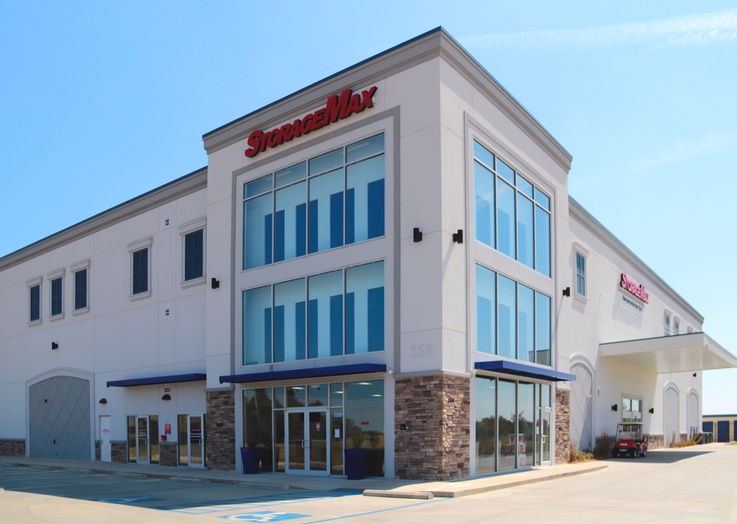Sorry, Wrong Number
Why Tenants Should Sign New Leases For New Units
The new tenant who rented a 5-by-10 unit last week is back in the office today looking flustered. It turns out the customer underestimated the amount of space he needed and now wants to upgrade to a 10-by-10. Is it a good idea to get the tenant to sign a new lease?
Insurance and legal experts say yes, most definitely. Without a signed lease reflecting the new unit number, the self-storage owner could be exposed to liability risks if the customer were to file an insurance claim or lawsuit down the road.
“A lease contains all of the liability protections for an operator,” says Scott Zucker, an attorney with the Atlanta firm of Weissmann Zucker Euster Morochnik. “If you don’t have a corresponding lease for a unit, you can’t use the lease to defend yourself in response to a claim.”
A lease may list the wrong unit number for a variety of reasons. There may be a simple input error that shows the unit number as 121 when the tenant has actually rented unit 112. Sometimes the tenant makes the mistake by moving into an empty unit next door to the space number listed in the lease and the manager doesn’t catch the error. Typically, the tenant changes units and the original lease has not been updated to reflect the change.
“Mistakes can happen when you’re dealing with 400 to 500 units at a facility,” Zucker says. “There’s a lot of paperwork that needs to happen to correspond to payments and leases. A lot of management software has been created to make that easier on managers, but mistakes still happen.”
Limiting Liability
Some insurance companies have designed specialty policies to protect self-storage owners who may make serious mistakes or are found to be negligent. One such policy, customer goods legal liability, provides coverage against loss or damage to customers’ personal property for which the self-storage business may be legally liable.
Self-storage lien sales are a minefield for operators, who can be sued even if they conduct the auction properly. Sale and disposal liability coverage protects self-storage operations against liability claims by customers for loss to their stored property due to the sale, removal, or disposal of the property as a result of a lien sale.
Several court cases reveal that facility managers and employees have made serious errors leading up to a lien sale. In some cases, the facility staff listed the wrong unit number on a lien sale, resulting in a wrongful sale and legal action.
While it’s advisable for all self-storage operators to carry specialty insurance, the policies can have limitations. The policies employ hold-harmless language within the contract stating that the storage operator is not responsible for any damage in the unit. Without the correct unit number listed on the lease, storage owners could potentially have additional liability exposure.
“The majority of states recognize that language, and it will be binding,” says Debi Foster, MiniCo Insurance Agency claims adjuster. “If you don’t have a valid contract on a unit, then you can’t use the hold-harmless language.”
Operators may be venturing into dangerous territory when the unit number on the lease is inaccurate, especially in a lien sale.
“If there’s a sale of a unit and there is no corresponding lease, then you can’t use defenses in the lease to limit the liability of a storage operator,” Zucker notes. “One of the best examples is the limit of value provision, which is typically contained in a self-storage lease and has been upheld by many courts to limit the value of property stored in a unit.”
This value limitation stated in a lease—usually between $2,500 and $5,000—reduces the liability exposure of the operator should a tenant’s goods get damaged. However, owners could lose that protection without a valid lease.
“You would have a loss and you wouldn’t have any limit of liability,” Zucker says. “The tenant could seek to claim damages of whatever amount they argue was the value of the property they lost, and that could be substantial. You may have operators that don’t have sufficient insurance to cover that risk.”
Insurance companies may place a limit of $10,000 on a sale and disposal policy for a wrongful sale. If a judge ruled that the value of the tenant’s property that was auctioned is $20,000, the storage operator could be liable for the additional $10,000 judgment.
Having the wrong unit number in the lease could create a situation where a manager thinks the customer has stopped paying rent on the unit listed in the lease, when in fact the customer has been paying for another unit.
Another reason to update the lease is to reflect a different rental rate when moving to a larger or new climate-controlled unit. Also, facilities sometimes have lease terms of three months to a year; moving to another unit could restart the term of the lease.
“If you’re moving into a new unit, your contract could be starting over again, so you want to make sure it’s proper in that it addresses any changes that were made by the tenant that may impact the facility,” says Don Sedlacek, MiniCo’s vice president of claims. “It’s important that if there is a change that the facility look at those changes to see if it requires a new lease.”
Safeguards Prevent Errors
To prevent damaging errors, many facilities employ checklists, operational handbooks, and audits to verify that current leases correspond to the correct units.
“It’s important that a facility has a safeguard where the manager is reviewing each lease that is collected,” says Sedlacek. “If there is a mistake made, they usually are made aware of it quickly because they’re addressing the rental charge for every leased unit, and when those don’t match up, they start looking into the reason for that. Has somebody not paid their monthly charge or have they moved that tenant from one unit to a larger one?”
Property management software and operations manuals also offer safeguards for facility staff.
“There should be an operational handbook that discusses how to transfer a unit or if a tenant moves from one unit to another, what the process and procedure should be for that, including the execution of a new lease,” Zucker recommends. “It’s also a good idea that there be regular audits done of units and corresponding leases so before there’s ever a mistake made, a manager will cross-reference every unit they have rented to their tenant’s name and that they have a lease in the file for that tenant. You can catch some of these things in advance just by a regular audit.”
Should the worst happen and the owner has to file a claim because of alleged negligence, could the insurance company reject the claim simply because a mistake was made with the unit number?
“That would be very rare for us to deny that coverage because you look at what caused that error and that is negligence per se,” Sedlacek says. “Sometimes you get into a scenario where it may not be covered, but I have not seen that happen at MiniCo.”
Adds MiniCo’s Foster, “If you’re negligent for something, you have liability coverage for that. The policy is there to cover for damages the insured is legally responsible for.”
David Lucas is a freelance writer based in Phoenix, Arizona. He is a frequent contributor to all of MiniCo’s publications.
SIDEBAR
Making Sure The Kiosk Kicks Out A Signed Lease
Nearly 50,000 self-storage move-ins were completed through Insomniac self-service kiosks in 2015, according to OpenTech Alliance. While kiosks can serve as automated “assistant managers” at many facilities, humans still need to manage the move-in process. That includes making sure a signed lease is secured and filed properly.
Fortunately, kiosks are set up to ensure that the new tenant signs the proper lease and it is made available to the manager in electronic or paper form.
Robert Chiti, president and CEO of Phoenix-based OpenTech Alliance, says kiosks are configured to obtain a signed lease from the new customer before a payment is made.
Insomniac is designed to ask the tenant questions the way a manager would. For example, if the tenant plans on storing a vehicle, the kiosk opens a window to request the vehicle identification number so that a vehicle lease addendum can be included with the standard lease.
“Typically, they sign on screen so we have a digital signature,” Chiti says. “You have to agree to the terms before you make the payment.”
Once the lease is signed, it is delivered to the tenant via PDF or it’s printed at the kiosk. The manager can log into the system and print a paper copy of the PDF for filing.
Attorney Scott Zucker says he hasn’t seen any liability problems caused by kiosks, however, humans can still make errors. “You could have a greater problem with leases not properly filed by the manager or there are other missteps that are human errors,” Zucker says.
More Content
Popular Posts
Recent Posts
When Germantown High School in Gluckstadt,...
It’s comforting to know that no matter how...
A very wise self-storage expert once said...
Senate Bill 709 (SB709) has many in the...
In January, self-storage industry veteran...
In April 1984, the first non-stop commercial...
Raise your hand if you’ve ever made plans,...
Everyone knows it: Investing in real estate...









